How We Use Building Condition Surveys to Achieve Big Picture Ideas
The constant struggle to keep up with basic maintenance and repairs, paired with an under-investment in school facilities, has created a backlog of needs in schools that often result in high-cost emergency repairs. In 2013, the State of Our Schools Report estimated that school districts were carrying at least $271 billion in deferred maintenance and facilities spending. However, with proper planning and thoughtful use of your next Building Condition Survey, these additional expenses can be avoided while also creating an opportunity for you to implement your Big Picture ideas.
When it comes to buildings, appearances can be deceiving. From the outside, a facility may seem to be in good shape; however when you look a little closer, you’ll see there are indeed issues that need to be addressed. The truth is, in the course of 5 years from one Building Condition Survey to another, a lot can happen to a building. Often districts don’t realize what is happening until it is too late. Having a fresh set of eyes telling you what needs to be fixed, repaired, or replaced, can make all the difference when it comes to seeing issues and preventing bigger ones down the line.
For Midlakes, the question came up of how to connect the campus better. One of the results of our discussions with them was the concept of a large, looping walking path that connects event parking lots with the athletic fields. Not only will the walking path provide easy access to walk or drive on, but will be able to accommodate a variety of user mobility needs.
Every school has their own unique set challenges that they face. From an architectural standpoint, Building Condition Surveys are an invaluable resource to learn what needs the school district has, including what challenges they would like to overcome and assisting with the implementation of ideas from a school & community perspective. When Building Condition Surveys are performed, all items that make the list are prioritized, with 1 being the most important, and 5 being items that could be completed in the future. This list provides school districts with an outline of what items need to be addressed and how urgent they are. The BCS, combined with a thorough Pre-BCS preparation, can then be used as an important tool to help more accurately plan budgets while also implementing more global goals.
An example of our work is at Midlakes. While conducting a Building Condition Survey for Phelps-Clifton Springs (Midlakes), the question came up of how to connect the campus better. To see what possibilities there were to help them address this, we took a close look at the campus as a whole and how it was interconnected. We had to take everything into consideration from how the grounds and parking lots interact, to whether there was adequate access for the elderly/handicapped to the athletic fields. One of the results of taking the time to understand the Big Picture was the concept of designing a large, looping walking path that connects event parking lots with the athletic fields. Not only will the walking path provide easy access to walk or drive on, but will be able to accommodate a variety of user mobility needs.
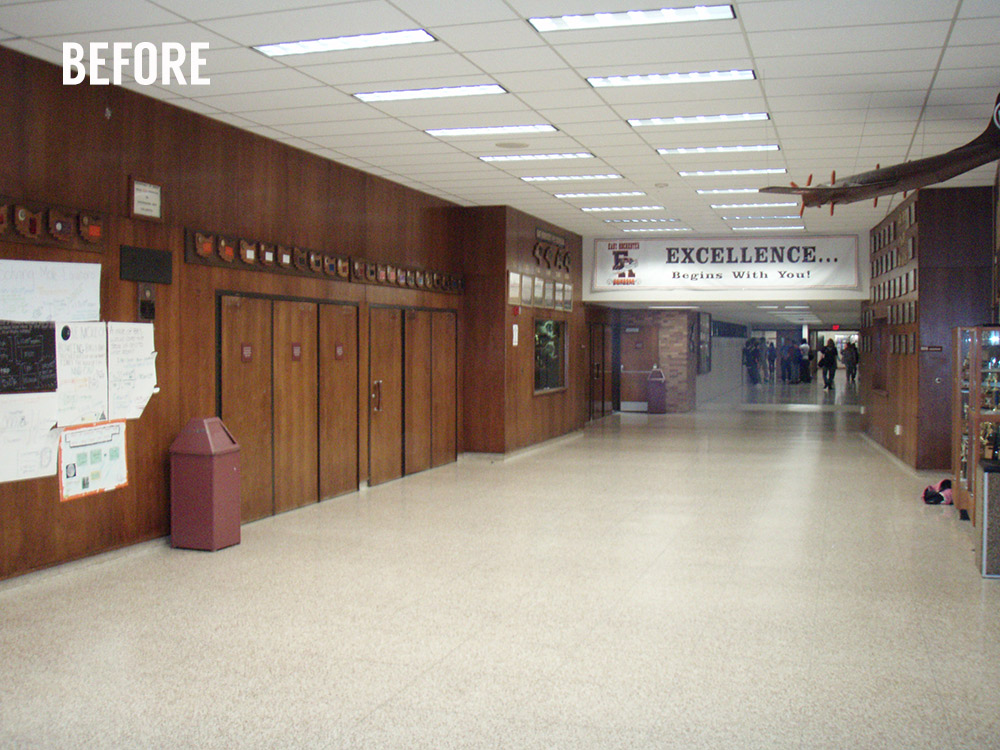
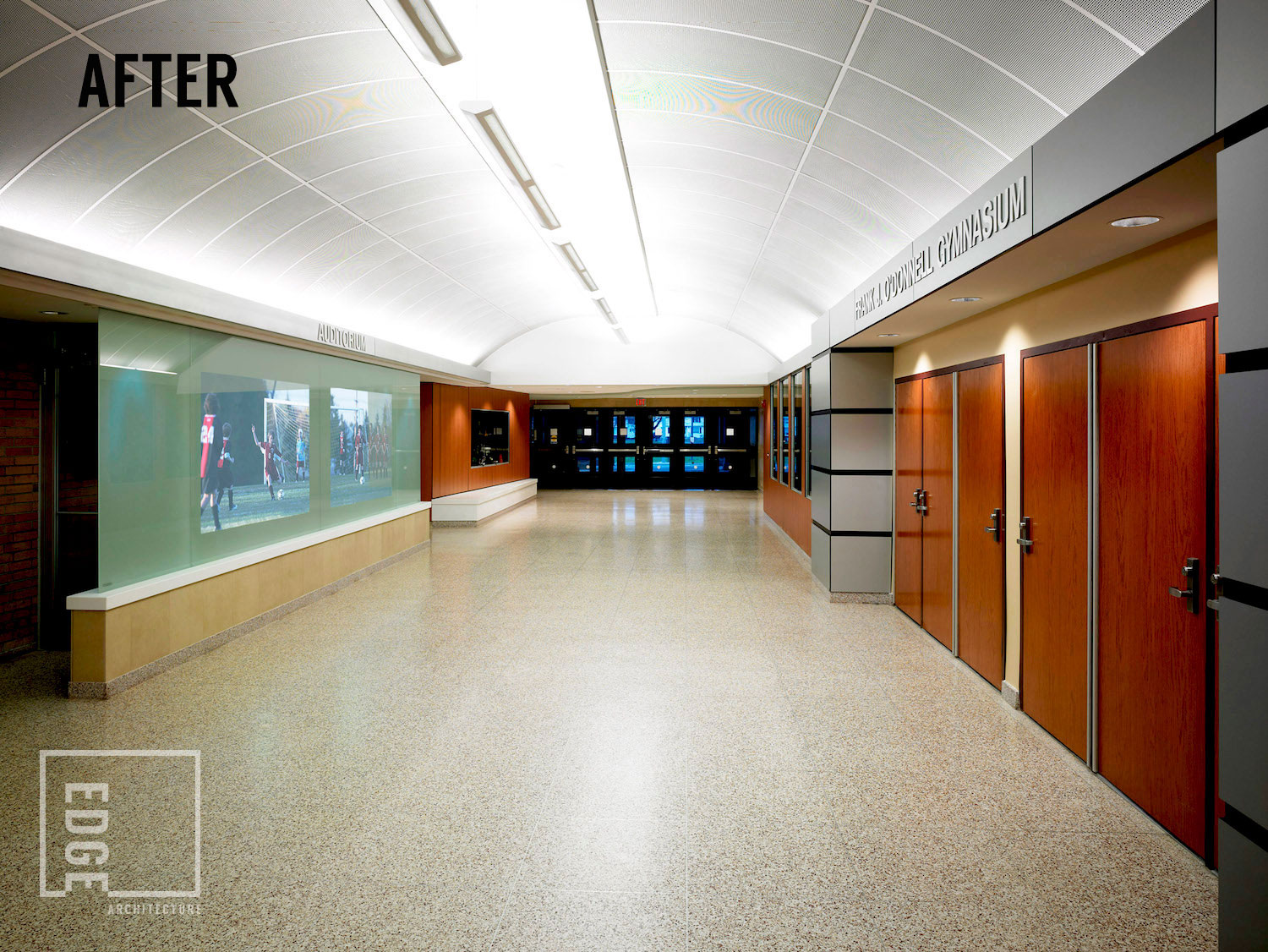



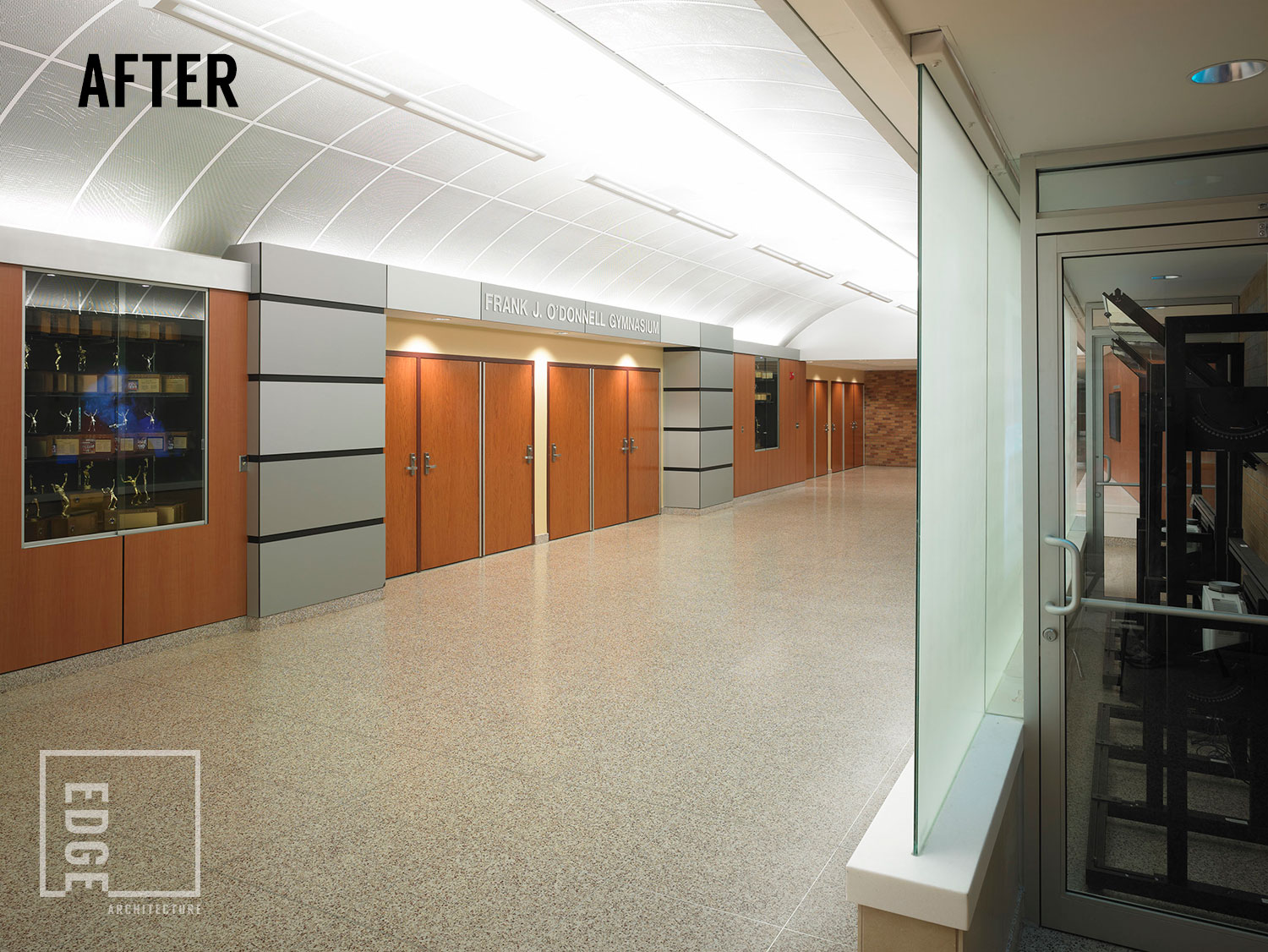
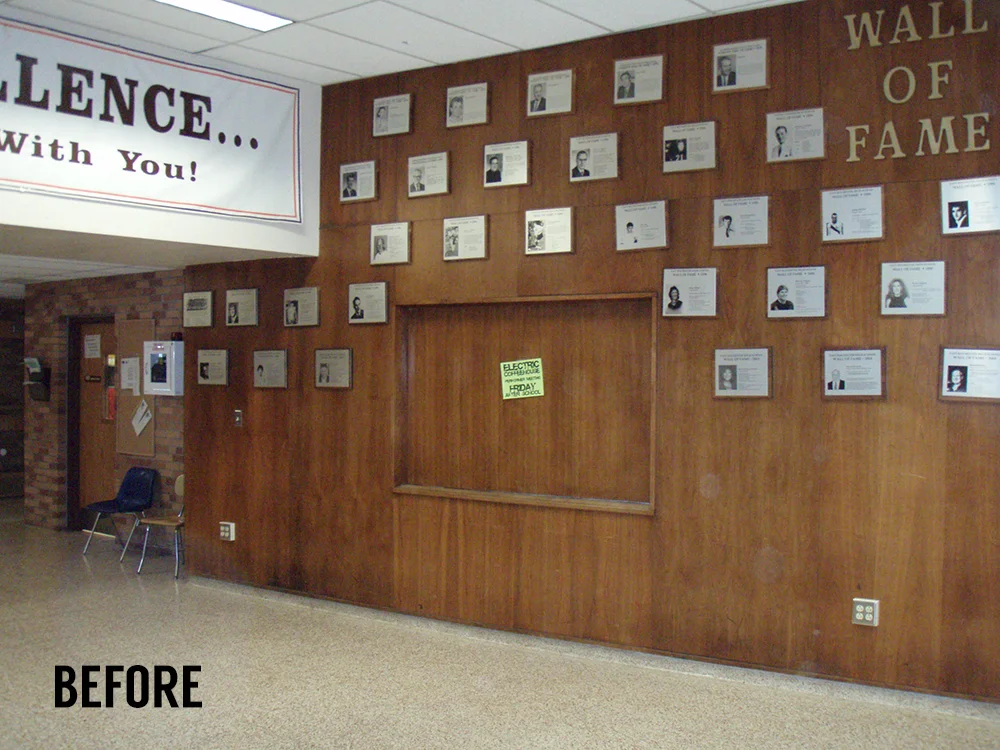
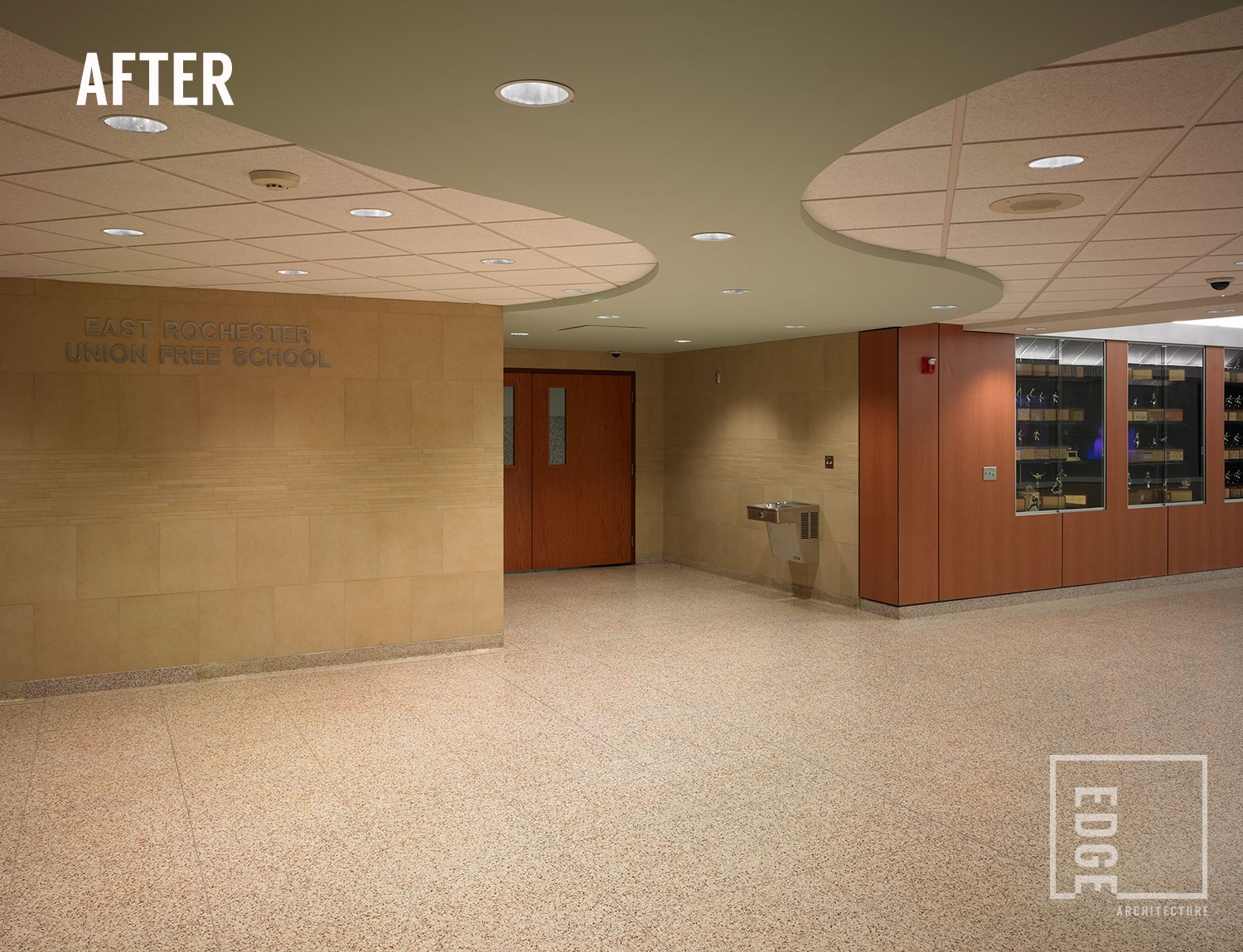
Another case where a “Big Picture” idea was successfully integrated via a Building Condition Survey is at East Rochester Union Free School District. The lobby was dated and due for repair, and it was the perfect opportunity to not only update it with a more modern look, but also find ways to achieve their goal of finding new and interesting ways to celebrate their student activities and achievements. The transformation of the lobby was a game changer for the district. By uniquely integrating technology with the addition of video and touch screens into our vision for their school lobby, we were able to transform something that was ordinary and dated, to something progressive and modern. It changed the community’s opinion on where the school was going, and is something that the school was, and continues to be proud of.
As many of us at Edge are parents with kids in school, our personalized approach to Building Condition Surveys stems from our interest in helping school districts from a parental perspective. We see our role as more than a consultant. We integrate ourselves into the fabric of the school communities that we assist. Going beyond just nuts and bolts, the open communication-style that we approach our schools with sparks holistic concepts that add to the “Big Picture” ideas that they would like to achieve.

